Traditionally, egg drop soup—called dan hua tang in Mandarin—is all about the simplicity of beaten eggs gently stirred into hot broth to create silky ribbons. What I love about adding mushrooms to the mix is the way they round out the broth’s flavor profile. They bring earthiness, umami, and texture that the classic version simply doesn’t have.
I’ve made this soup countless times over the years, tweaking it based on what’s in the fridge or what kind of mood I’m in. But the bones of it—ginger, garlic, a good broth, fresh mushrooms, and egg—stay the same. This recipe respects tradition while embracing the kind of practicality home cooks actually need.
It hits all the marks: fast, flavorful, minimal mess, and deeply nourishing.
Why You’ll Love Cooking (and Eating) This Soup At Home
This isn’t just a quick meal—it’s a clever one. Every element in this soup pulls its weight, balancing flavor and function with zero filler. The whole recipe comes together in one pot, which means less cleanup, fewer steps, and no juggling of pans on the stove. That’s crucial when your time is limited but your standards aren’t.

What makes it especially effective are the textural contrasts. You’ve got the meaty bite of mushrooms set against the whisper-light strands of cooked egg. The broth, when slightly thickened with a cornstarch slurry, hugs all the ingredients, creating a mouthfeel that’s both light and satisfying.
Also, mushrooms aren’t just filler here—they’re the flavor foundation. Whether you’re using shiitake for a smoky depth or cremini for a more subtle earthiness, the mushrooms elevate the cooking from a basic broth-and-egg soup to actual culinary presence.
And thanks to their natural glutamates, they give you a deeply savory base without reaching for MSG or artificial boosters.
A study published in the Journal of the Science of Food and Agriculture supports this, demonstrating that mushrooms can enhance the sensory properties of egg whites, making the combination more palatable and flavorful.
If you’re a vegetarian, swapping in vegetable broth makes it plant-based without losing integrity. If you eat meat, a quality chicken bone broth adds another layer of richness.
Essential Ingredients Breakdown
Let’s break down what goes into this 20-minute powerhouse and why each ingredient matters. Nothing’s in here by accident.
Mushrooms
Shiitake is my go-to for this recipe—its woodsy aroma and bold umami flavor stand up beautifully in broth. If you’re after a more delicate note, cremini (aka baby bella) is a great backup. I steer clear of white button mushrooms here; they lack depth and get lost in the soup.
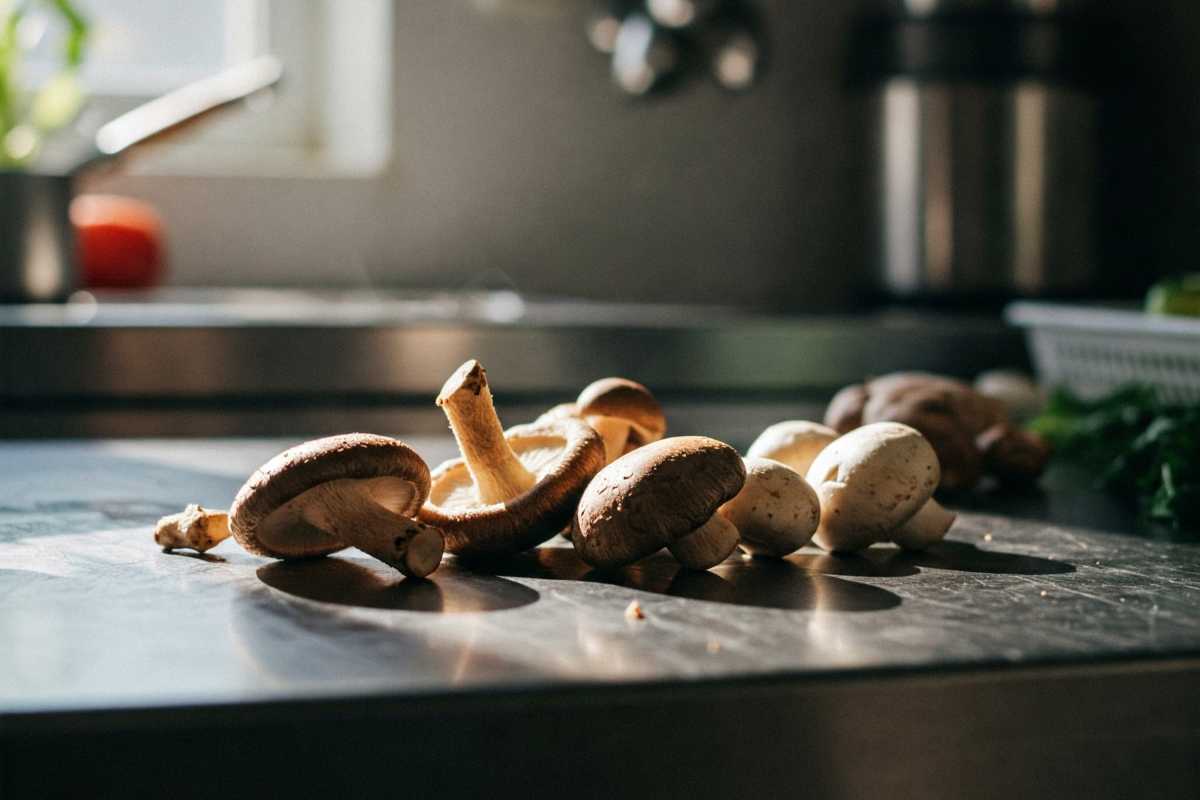
Eggs
This is your texture star. Beaten eggs poured slowly into the hot broth form those signature ribbons—silky, light, and visually appealing. Pasture-raised eggs tend to have brighter yolks and richer taste, which adds both nutrition and color.
Broth
You want something with backbone here. Homemade chicken broth is ideal if you’ve got it. If not, low-sodium boxed broth works—just doctor it up with aromatics. For vegetarian versions, mushroom or vegetable broth does the job well, but it should be high-quality. I’ve used Kettle & Fire’s mushroom broth with great success
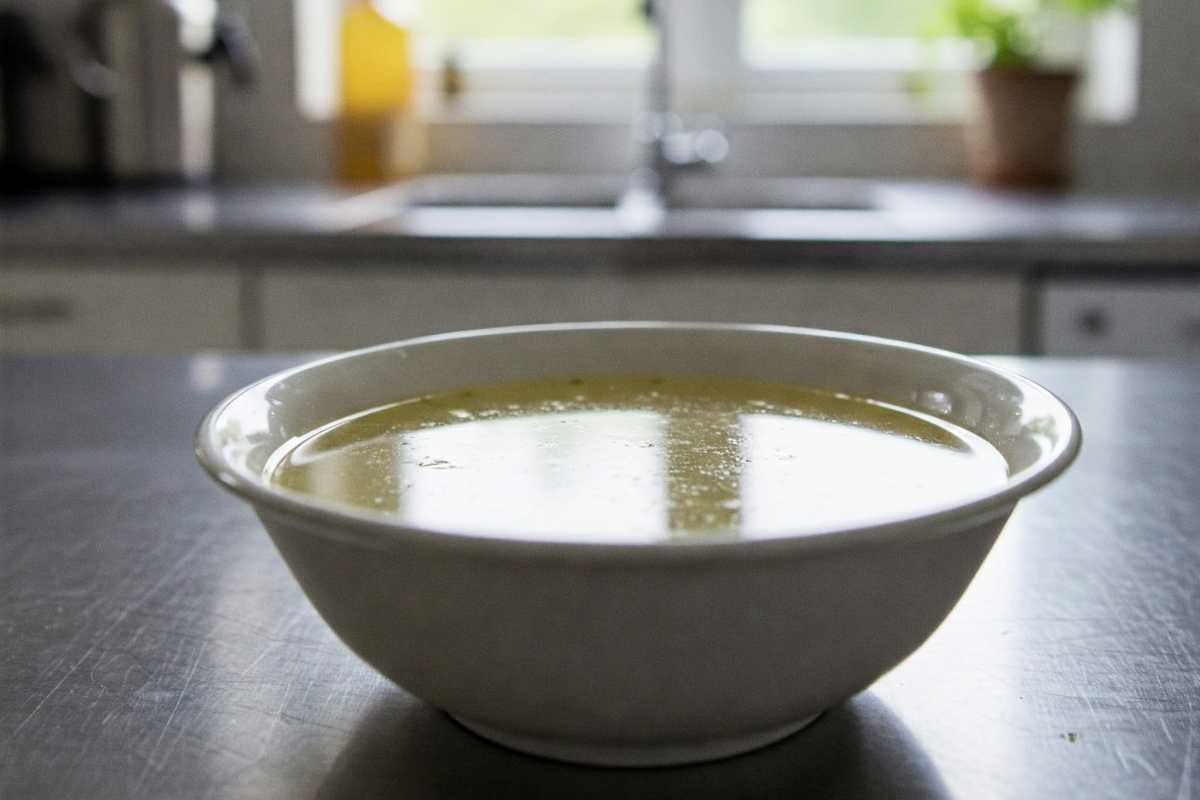
Aromatics (Ginger, Garlic, Green Onions)
Ginger adds a sharp, warming note that cuts through the richness. Garlic deepens the savory profile. Scallions (green onions) give a final fresh pop and visual appeal. Don’t skip them—they’re more than garnish.
Flavor Base (Soy Sauce, White Pepper, Sesame Oil)
Soy sauce adds salt and depth. White pepper is traditional and delivers a gentle heat that black pepper can’t replicate. Toasted sesame oil is your finishing note—it’s fragrant, nutty, and gives the soup a restaurant-quality finish.
Cornstarch Slurry
This is the secret to that subtle, luxurious thickness. Mix 1 tablespoon of cornstarch with 2 tablespoons of cold water and stir it into the broth right before the eggs. It gives the soup body without making it heavy.
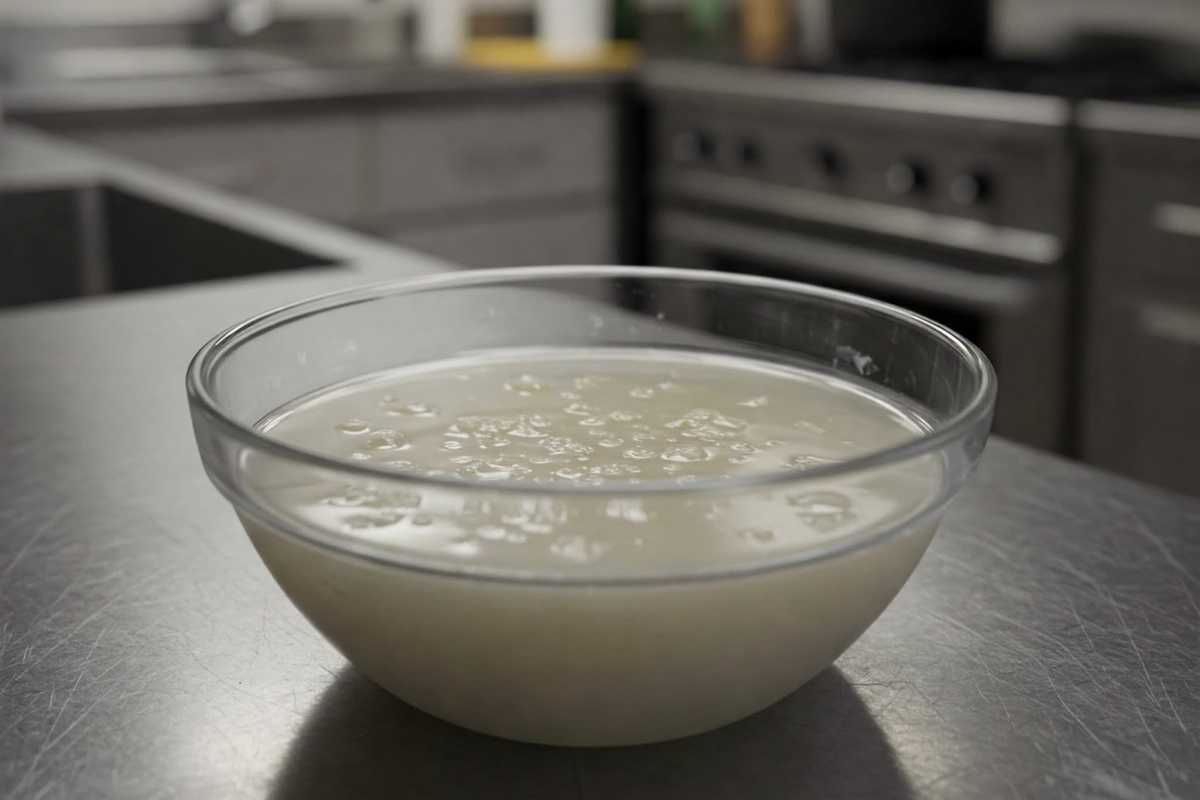
This ingredient list isn’t long, but each component plays a precise role. If you shortcut too much, you’ll end up with bland broth and mushy mushrooms, which defeats the whole purpose.
Ingredient Swaps & Add-Ons
One of the joys of a simple soup like this is how adaptable it is. Once you understand the structure—broth, mushrooms, aromatics, egg—you’ve got room to play.
As someone who loves mushrooms and has spent years cooking with them, I can say that they welcome improvisation. But not all substitutions are created equal. Here’s what actually works:
Swaps You Make Without Affecting The Taste
- Vegetarian or Vegan Option:
Skip the egg and use soft tofu cut into small cubes. Silken tofu offers the same delicate mouthfeel and absorbs flavor well. Just don’t stir it too hard—it breaks easily.
- Broth Alternatives:
For a plant-based version, mushroom broth (like Pacific Foods or Kettle & Fire) brings out more earthy depth. For meat-eaters, a collagen-rich chicken bone broth creates a silkier base that clings to the egg and mushrooms.
- Mushroom Variations:
Can’t find shiitake? Oyster mushrooms give you a similar richness and slightly chewy texture. Avoid canned mushrooms—they’re limp, briny and ruin the balance.

Add-Ons That Will Enhance The Taste of The Soup
- Spice Kick:
A drizzle of chili oil or a few drops of Szechuan peppercorn-infused oil will completely change the experience. It turns the soup from soothing to bold—great for cold nights.
- Hearty Upgrades:
A handful of shredded rotisserie chicken or torn bok choy takes it into whole-meal territory. I’ve even tossed in soba noodles once when I had leftovers—and I’d do it again.
- Umami Boosters:
A spoonful of white miso whisked into the broth before adding the egg can deepen the flavor quickly. A splash of fish sauce? It’s controversial, but if used sparingly, it adds complexity without making the soup fishy.
Don’t throw everything in at once. The key here is restraint—one smart upgrade at a time keeps the soup’s integrity intact while letting your preferences shine through.
Step-by-Step Cooking Process
This soup moves fast—blink and you’re done. Here’s how I make it every time. You don’t need a wok or special tools, just a medium saucepan and 20 focused minutes.
1. Preparing Your Ingredients (5 Minutes Max)
Start by slicing your mushrooms thinly so they cook quickly and evenly. Grate your ginger, mince your garlic, whisk your eggs, and mix your cornstarch slurry (1 tbsp cornstarch + 2 tbsp cold water). Set everything within reach.
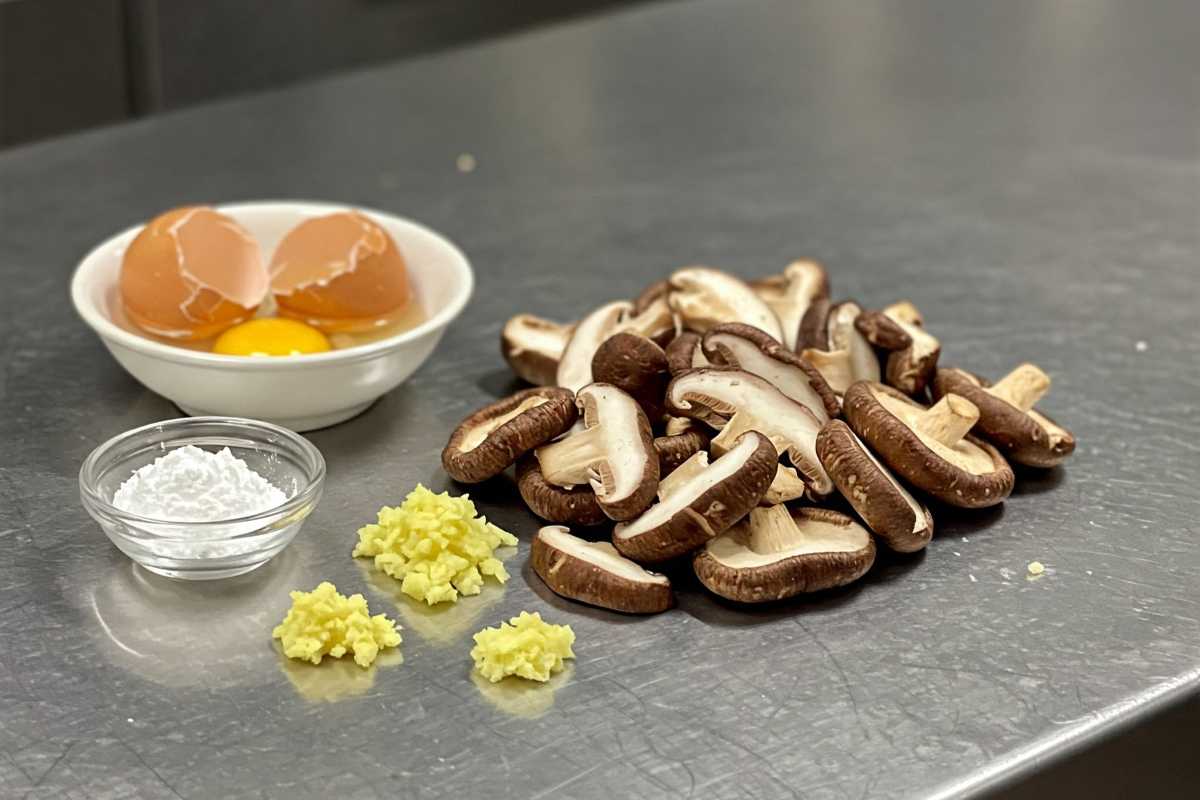
2. Saute Aromatics and Mushrooms
In your pot, heat a teaspoon of neutral oil (or sesame oil for more flavor). Toss in the garlic and ginger first—let them bloom for about a minute. Then add your mushrooms. Cook them down until they soften and darken slightly, about 3–4 minutes. They should release a little moisture, then begin to absorb flavor.
3. Simmer the Broth
Pour in your broth and bring it to a simmer. Add your soy sauce, a dash of white pepper, and let everything come together for a few minutes. Taste here—adjust salt or seasoning before adding the slurry.
4. Add the Slurry
Stir the cornstarch slurry and pour it into the hot broth while stirring gently. Give it a minute to thicken. You’re not looking for chowder consistency—it should still be sip-able but with a little body.
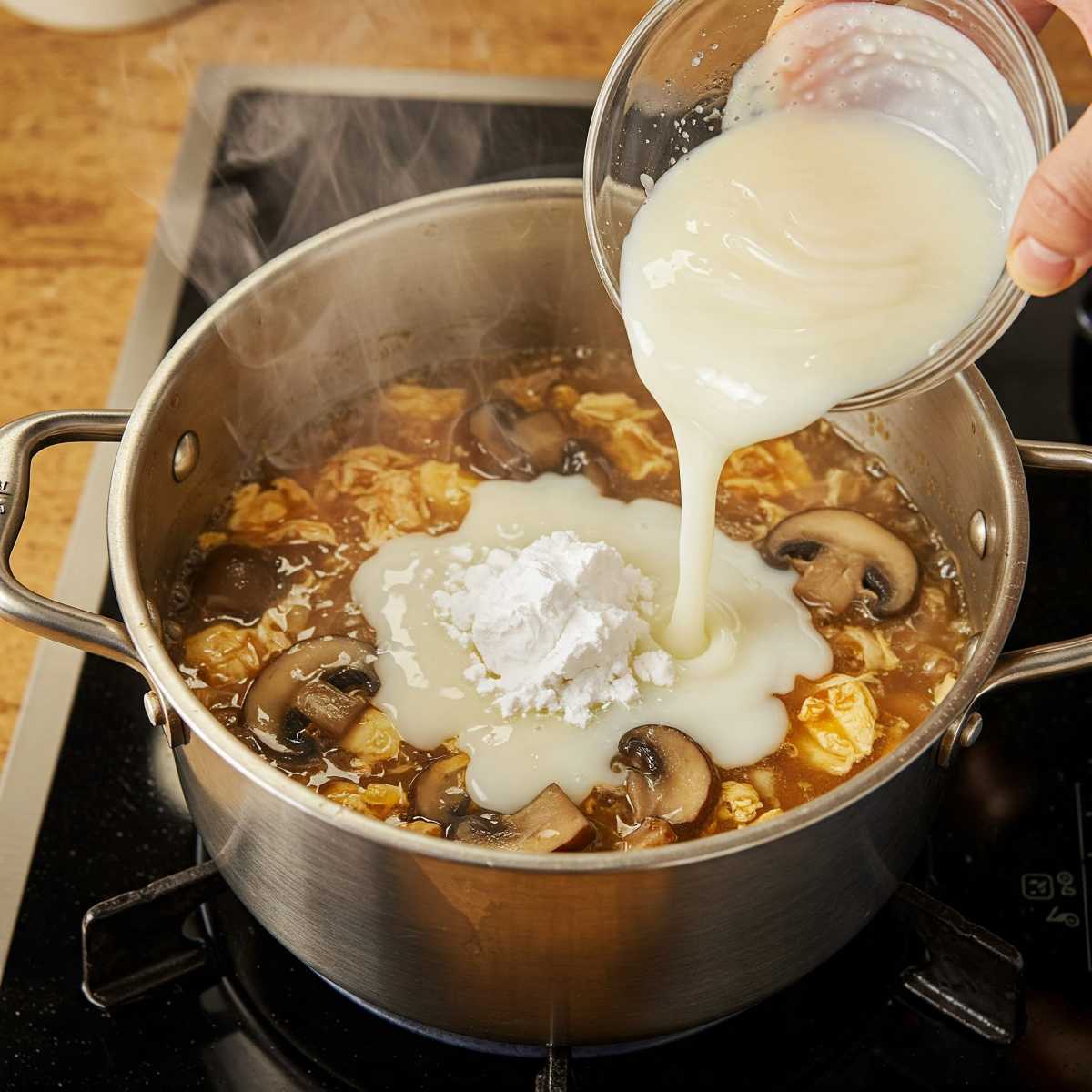
5. Make the Egg Ribbons
Turn the heat down slightly. Take your whisked eggs and slowly drizzle them in a thin stream while stirring the soup in a circular motion. The motion matters—it’s what gives you those delicate, wispy strands. Don’t pour too fast, and don’t stir aggressively. This step takes about 30 seconds.
6. Finish and Serve
Kill the heat. Add a few drops of toasted sesame oil and a handful of thinly sliced green onions. Ladle it into bowls immediately—this soup is best enjoyed hot, when the flavors are still layered and fresh.
The whole process is about rhythm. Once you’ve done it a few times, you’ll never need to look at a recipe again.
More mushroom soup recipes for you:

Easy Mushroom Egg Drop Soup
Equipment
- 1 Medium Pot
- 1 Wooden spoon or heatproof spatula
- Whisk or fork
- Knife and cutting board
- Measuring spoons
- 1 Ladle
Ingredients
- 4 –5 fresh shiitake mushrooms or 1 cup cremini, thinly sliced
- 2 large eggs lightly beaten
- 4 cups low-sodium chicken or mushroom broth
- 1 tablespoon soy sauce
- 1 teaspoon freshly grated ginger
- 1 garlic clove minced
- 1 tablespoon cornstarch mixed with 2 tablespoons cold water
- 1/4 teaspoon white pepper or to taste
- 2 teaspoons toasted sesame oil
- 2 green onions finely sliced (for garnish)
- 1 teaspoon neutral oil vegetable or canola
Instructions
- Heat 1 tsp neutral oil in a medium saucepan over medium heat. Add the minced garlic and grated ginger, stirring until fragrant (about 1 minute).
- Add sliced mushrooms. Cook for 3–4 minutes until they soften and begin to release moisture. Stir occasionally to prevent sticking.
- Pour in the broth. Add soy sauce and white pepper. Bring to a gentle simmer and let flavors meld for 3–4 minutes.
- Stir in the cornstarch slurry (1 tbsp cornstarch + 2 tbsp cold water). Simmer for 1–2 minutes until slightly thickened. The soup should have a light, silky body—not too thick.
- Lower the heat slightly. Slowly drizzle the beaten eggs into the pot in a thin stream, stirring gently in a circular motion. This forms delicate strands throughout the soup. Let it cook for about 30 seconds.
- Turn off the heat. Add toasted sesame oil and stir gently. Garnish with sliced green onions and serve hot.
Notes
- Vegetarian Version: Use mushroom broth and replace the egg with soft tofu cubes for similar protein and texture.
- Flavor Boosters: Add a small amount of miso paste or a few drops of chili oil for extra depth.
- Storage: Best eaten fresh, but can be stored in the fridge for up to 2 days. Reheat gently—do not boil after adding the egg.
- Avoid: Canned mushrooms—they have an off-putting texture and overly briny taste that can dull the broth’s clarity.






